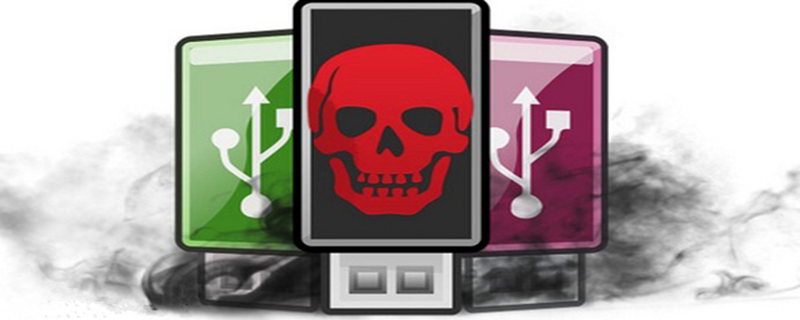Home >Common Problem >what does usb mean
what does usb mean
- (*-*)浩Original
- 2019-07-23 09:21:4612977browse
USB, the abbreviation of English Universal Serial Bus, is an external bus standard used to standardize the connection and communication between computers and external devices. It is an interface technology applied in the PC field.

Universal Serial Bus (USB) is an emerging data communication method that gradually replaces other interface standards. It was developed by Intel , Compaq, Digital, IBM, Microsoft, NEC and Northern Telecom and other computer companies and communications companies jointly formulated it in 1995, and gradually formed an industry standard. (Recommended learning: PHP video tutorial)
As a high-speed serial bus, the USB bus has extremely high transmission speed that can meet the application environment requirements of high-speed data transmission, and the bus also It has simple power supply (can be bus powered), convenient installation and configuration (supports plug-and-play and hot-swap), simple expansion ports (up to 127 peripherals can be expanded through a hub), and diversified transmission methods (4 transmission modes) , as well as good compatibility (downward compatibility after product upgrade) and other advantages.
Since its launch, the universal serial bus (USB) has successfully replaced serial ports and parallel ports and has become one of the standard expansion interfaces and essential interfaces for a large number of computers and smart devices in the 21st century. It has now developed to USB 3.2 version.
USB has the advantages of fast transmission speed, easy use, hot-swappable support, flexible connection, and independent power supply. It can be connected to a variety of peripherals such as keyboards, mice, and large-capacity storage devices. This interface is also widely used. in smartphones. The interaction between smart devices such as computers and external data is mainly through network and USB interfaces.
Data transmission
The main controller is responsible for the transmission of data streams between the host and the USB device. These transmitted data are treated as a continuous bit stream. Each device provides one or more interfaces that can communicate with the client program. Each interface consists of 0 or more pipes, which independently transmit data between the client program and the specific terminal of the device.
USBD establishes interfaces and pipelines for the actual needs of the host software. When a configuration request is made, the host controller provides services according to the parameters provided by the host software.
USB supports four basic data transfer modes: control transfer, isochronous transfer, interrupt transfer and data block transfer. Each transmission mode has different properties when applied to terminals with the same name.
Control transmission type
Supports the transmission of control, status, configuration and other information between the peripheral and the host, providing a control channel between the peripheral and the host . Each peripheral supports a control transfer type that allows configuration and command/status information to be transferred between the host and the peripheral.
Isochronous (lsochronous) transmission type (or synchronous transmission)
Supports periodicity, limited delay and bandwidth and constant data transmission rate. Data transmission between the device and the host. This type has no error checking, so correct data transmission cannot be guaranteed. It supports data transmission between computer-telephone integration systems (CTI) and audio systems and hosts.
Interrupt transmission type
Supports input devices such as game controllers, mice and keyboards. The amount of data transmission between these devices and the host is small and non-periodic, but it is responsive Time sensitive, requiring immediate response.
Data block (Bulk) transmission type
Supports printers, scanners, digital cameras and other peripherals. The amount of data transmitted between these peripherals and the host is large. USB This type of data transmission is only performed when the bandwidth is sufficient.
USB adopts a block bandwidth allocation scheme. If a peripheral exceeds the current bandwidth allocation or potential requirements, it cannot enter the device. Terminals of the synchronous and interrupt transmission types reserve bandwidth and ensure that data is transmitted at a certain rate. Centralize and control the terminal to transmit the transmission data according to the best available bandwidth.
For more PHP-related technical articles, please visit the PHP Graphic Tutorial column to learn!
The above is the detailed content of what does usb mean. For more information, please follow other related articles on the PHP Chinese website!

